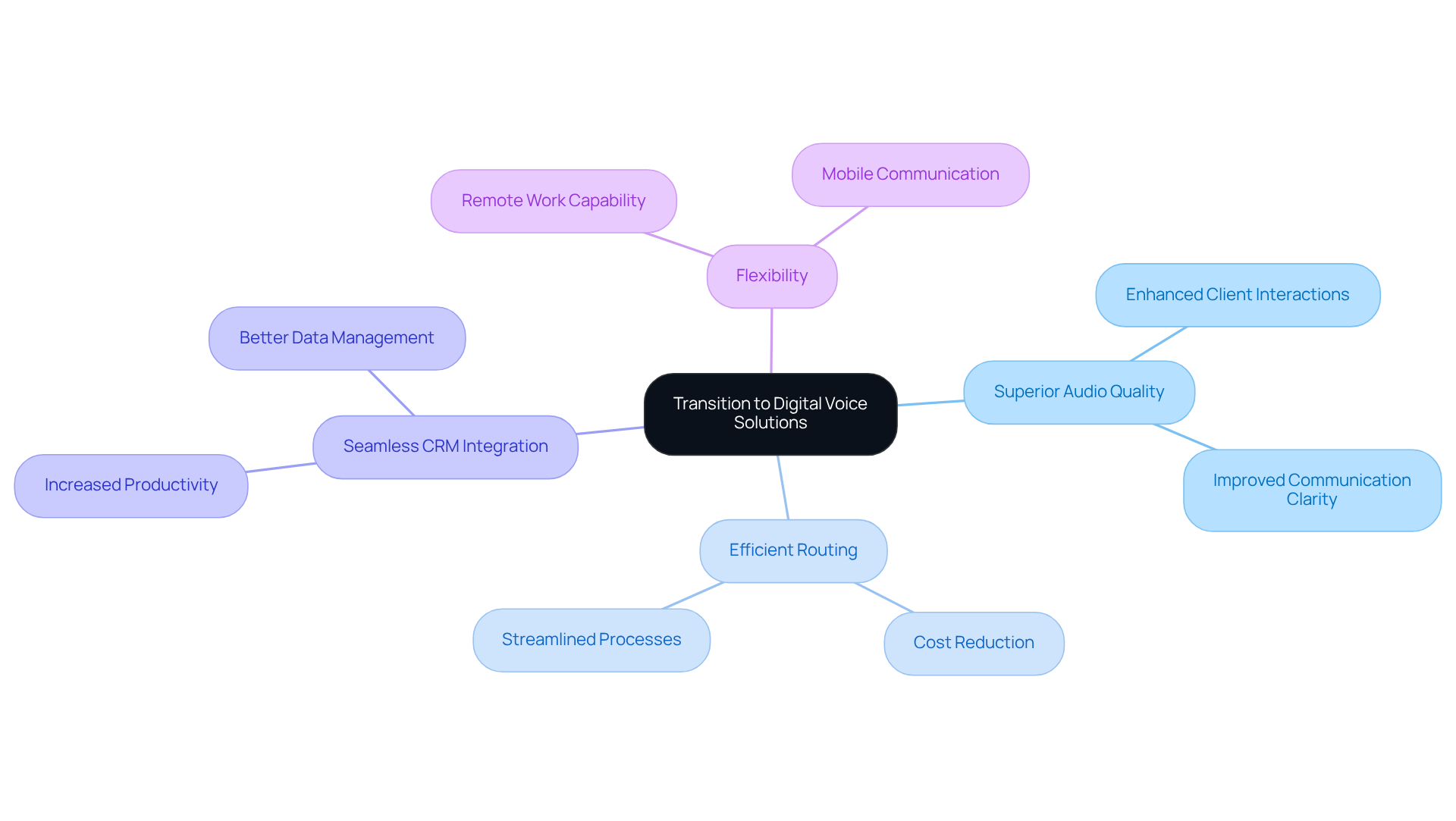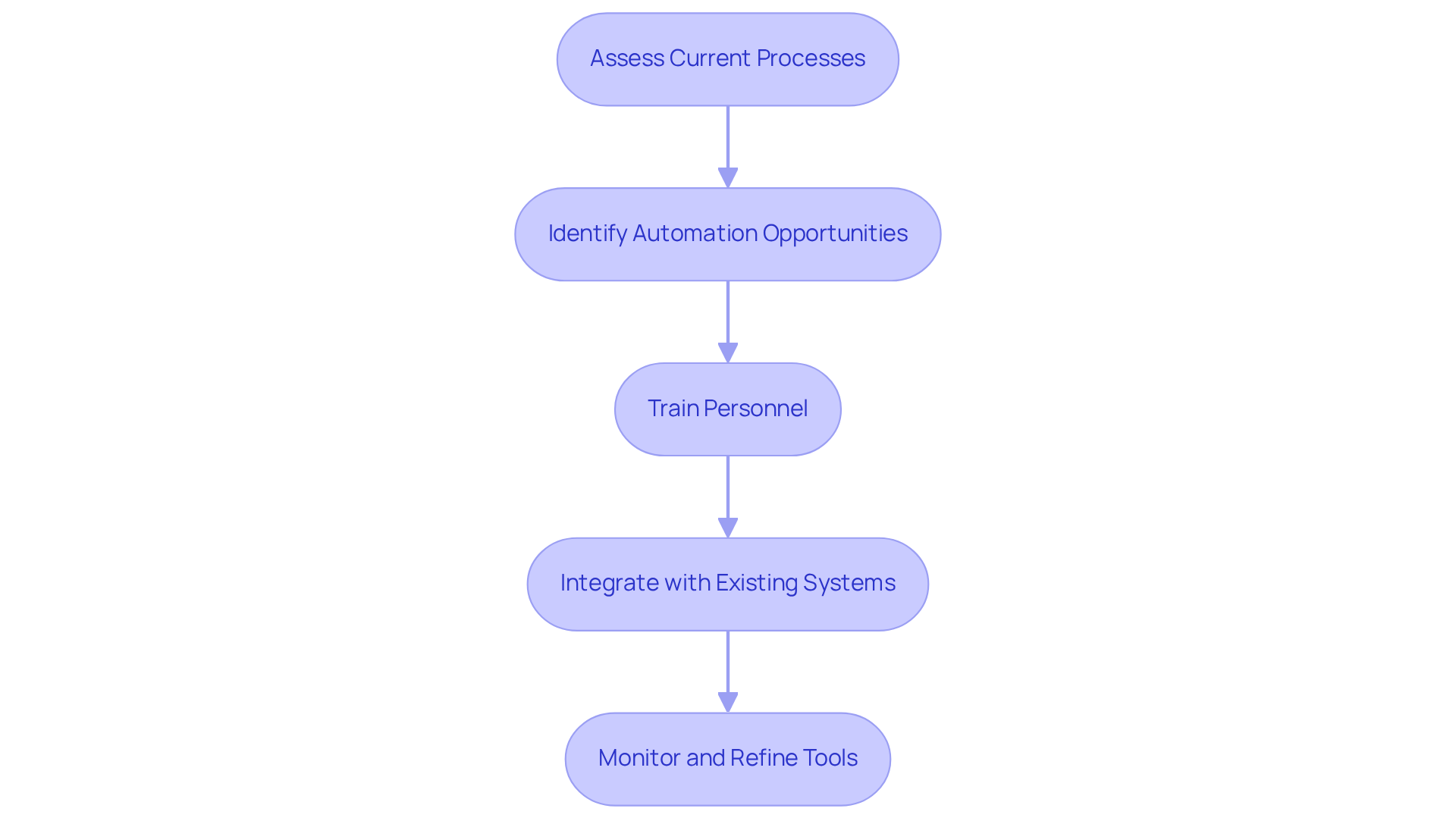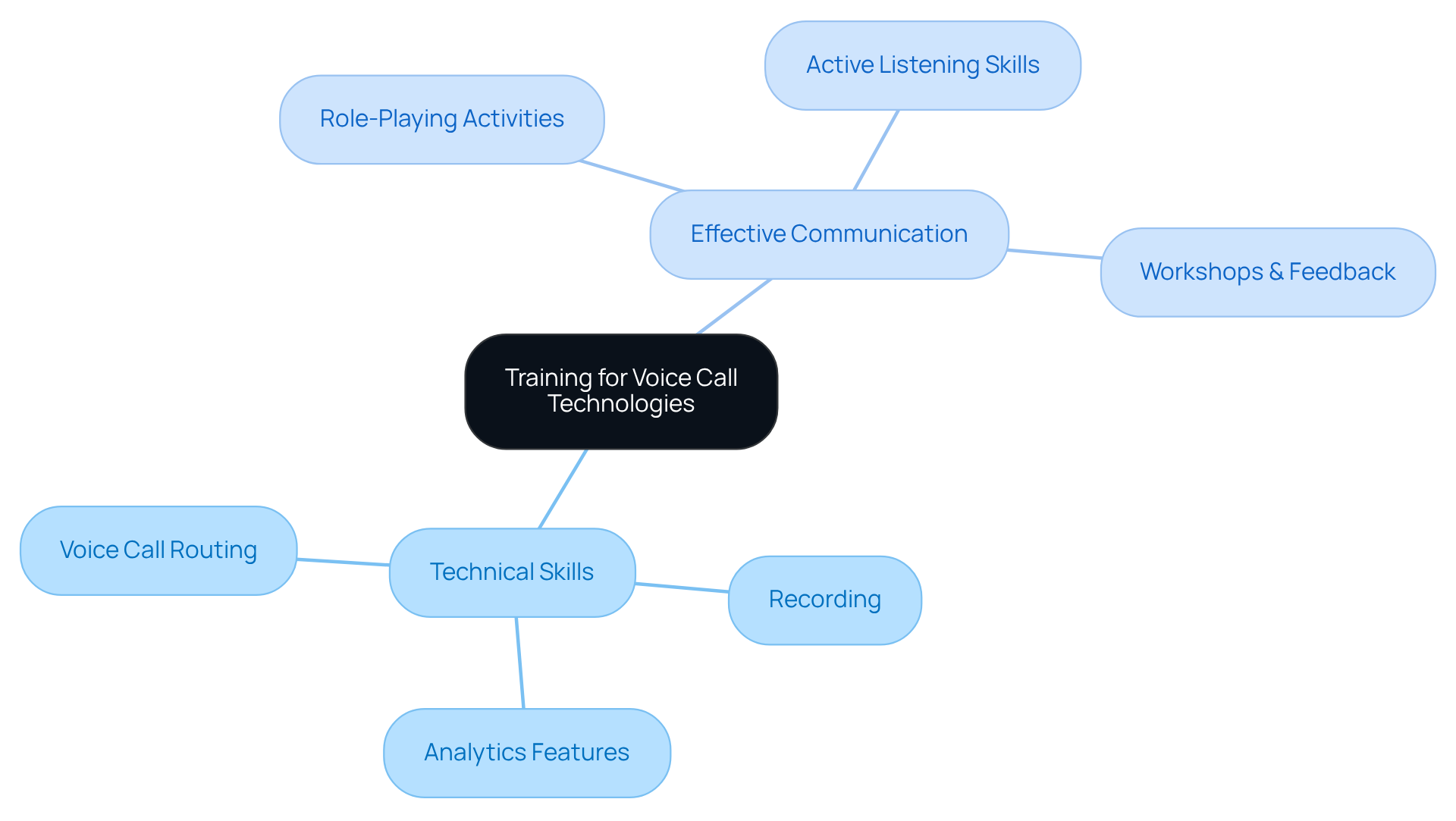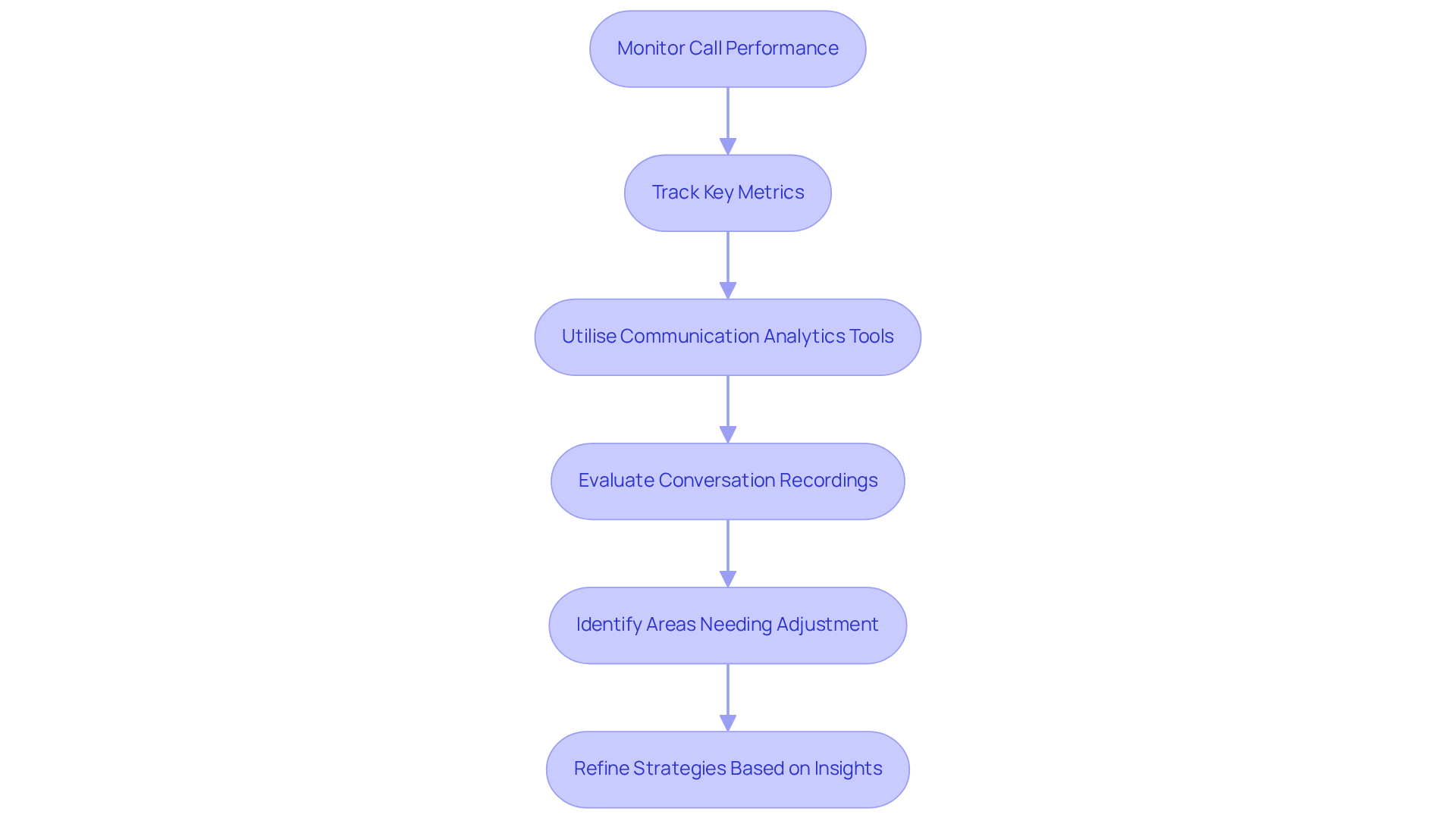
4 Strategies to Enhance Voice Call Management for Sales Success
Voice AI InnovationsOverview
This article delineates four pivotal strategies designed to enhance voice call management, crucial for achieving sales success. It emphasises:
- The adoption of digital voice solutions
- The implementation of Voice AI
- Comprehensive training for optimal technology use
- The meticulous monitoring of call performance
Evidence strongly supports that embracing VoIP and AI technologies can profoundly elevate customer interactions, streamline operational processes, and significantly boost conversion rates. Ultimately, these advancements lead to enhanced sales performance and increased customer satisfaction. The integration of these strategies is not merely beneficial; it is essential for any organisation seeking to thrive in today’s competitive landscape.
Introduction
The evolution of voice communication technology is fundamentally reshaping how sales teams operate, compelling them to adapt or risk obsolescence. With the rise of digital voice solutions such as Voice over IP (VoIP) and Voice AI, organisations are presented with a unique opportunity to enhance client interactions and streamline their sales processes. However, as these innovations emerge, critical questions arise:
- How can sales teams effectively implement these technologies to maximise their potential?
- What strategies will ensure that representatives not only adopt these tools but excel in their use?
Understand the Transition to Digital Voice Solutions
The transition to digital voice call solutions is transforming the operations of sales teams. As traditional landlines become obsolete, businesses must embrace Voice over IP (VoIP) solutions that offer enhanced features such as:
- Superior audio quality
- Efficient routing
- Seamless integration with customer relationship management (CRM) systems, including voice call functionality
Understanding this shift empowers sales personnel to leverage these innovations, significantly improving client interactions and streamlining their processes. For instance, adopting VoIP can reduce costs and provide flexibility, enabling representatives to make voice calls from any location—thereby boosting their efficiency and responsiveness to customer inquiries. Companies like Agentics lead the way in this evolution, delivering customised solutions that cater to the distinct needs of various industries.

Implement Voice AI for Streamlined Communication
Voice AI technology is revolutionising communication processes within sales teams by automating routine inquiries and enhancing voice call management. This transformation allows representatives to concentrate on high-value engagements that drive revenue.
For instance, Agentics’ AI-powered systems can analyse past conversations and client preferences, enabling representatives to tailor their presentations with remarkable efficiency. Moreover, Voice AI simplifies scheduling by managing voice calls, sending reminders, and following up with leads, ensuring that no opportunity slips through the cracks.
Businesses leveraging Agentics’ Voice AI have reported a significant increase in customer satisfaction, with 69% noting enhanced service experiences and improved conversion rates. This underscores the system’s profound impact on overall performance. In fact, customising outreach with Agentics’ AI can boost conversion rates by as much as 50%, highlighting the critical importance of integrating voice call technology into business strategies.
Additionally, companies utilising Agentics’ AI experience a 37% reduction in first response times compared to those lacking automation, further emphasising the efficiency gains from implementing Voice AI. However, ensuring proper integration with existing systems and continuously monitoring and refining the tools is essential to fully maximise their benefits.
To effectively implement Voice AI, sales teams should start by:
- Assessing their current processes
- Identifying automation opportunities
- Training personnel on the new system to facilitate a seamless transition

Train Teams for Optimal Use of Voice Call Technologies
To fully leverage the advantages of voice call communication technologies, sales teams must engage in comprehensive training that includes both technical skills and effective communication strategies. This training should provide an in-depth understanding of the voice systems in use, covering essential functionalities such as:
- Voice call routing
- Recording
- Analytics features
Role-playing activities prove especially beneficial, allowing representatives to practise their presentations and enhance their active listening skills—both critical for successful interactions. Furthermore, regular workshops and feedback sessions can significantly bolster team capabilities, ensuring that all members are adept at utilising the technology to its maximum potential.
Organisations that prioritise such training initiatives frequently witness substantial improvements in performance metrics and overall team morale. In fact, companies that invest in robust training programmes are 57% more effective than their competitors, underscoring the importance of structured training in achieving revenue success.

Monitor Call Performance and Adapt Strategies
Tracking performance during voice calls is crucial for enhancing marketing tactics. By concentrating on key metrics such as duration, conversion rates, and customer feedback, businesses can gain valuable insights. Utilising communication analytics tools allows sales managers to uncover effective strategies and identify areas needing adjustment. For example, data may reveal that communications exceeding a specific duration correlate with lower conversion rates. This insight prompts teams to refine their approach, emphasising brevity and clarity.
Frequent evaluations of conversation recordings yield additional insights into communication styles and methods, fostering continuous improvement. Businesses that actively track and adapt their strategies based on performance data not only enhance revenue outcomes but also significantly boost customer satisfaction. Statistics indicate that organisations leveraging voice call analytics experience a marked increase in conversion rates, highlighting the tangible benefits of data-driven decision-making in sales. Embrace the power of analytics to transform your marketing strategies and drive success.

Conclusion
The transformative impact of digital voice solutions on sales operations is profound. By embracing technologies such as Voice over IP (VoIP) and Voice AI, sales teams are equipped with tools that significantly enhance communication, improve efficiency, and ultimately drive revenue growth. Understanding and integrating these innovations allows organisations to foster better client interactions and streamline processes, positioning themselves competitively in an evolving marketplace.
Key strategies emphasised in this discussion include:
- Implementing Voice AI to automate routine tasks
- The necessity of comprehensive training for sales teams to maximise the use of technology
- The importance of monitoring call performance to adapt strategies effectively
Each of these elements contributes to a holistic approach that empowers sales representatives to focus on high-value engagements while continuously refining their methods based on data-driven insights.
As the landscape of sales communication evolves, it is imperative for organisations to not only adopt these technologies but also cultivate a culture of continuous improvement. Investing in training, leveraging analytics, and embracing innovative solutions enables sales teams to unlock their full potential, leading to enhanced customer satisfaction and increased conversion rates. The time to act is now—embrace these strategies to ensure sustained success in the dynamic world of sales.
Frequently Asked Questions
What is driving the transition to digital voice solutions for sales teams?
The transition is driven by the obsolescence of traditional landlines, prompting businesses to embrace Voice over IP (VoIP) solutions.
What are the key features of Voice over IP (VoIP) solutions?
Key features of VoIP solutions include superior audio quality, efficient routing, and seamless integration with customer relationship management (CRM) systems, including voice call functionality.
How does understanding the shift to digital voice solutions benefit sales personnel?
Understanding this shift enables sales personnel to leverage innovations that significantly improve client interactions and streamline their processes.
What advantages does adopting VoIP provide to sales representatives?
Adopting VoIP can reduce costs, provide flexibility, and enable representatives to make voice calls from any location, boosting their efficiency and responsiveness to customer inquiries.
Which companies are leading the way in providing digital voice solutions?
Companies like Agentics are leading the way by delivering customised solutions that cater to the distinct needs of various industries.
Enjoyed this post? Share it with your network!
10 Best AI Sales Tools to Boost Your Team’s Performance

Discover the top 10 best AI sales tools to enhance team performance and drive revenue growth.
Mastering Test Call Numbers: A Step-by-Step Guide for Sales Directors

Elevate your communication with our guide on mastering test call numbers for sales success.
7 Ways Automated Outbound Calls Boost Sales Performance

Discover how automated outbound calls enhance sales performance and streamline communication.
